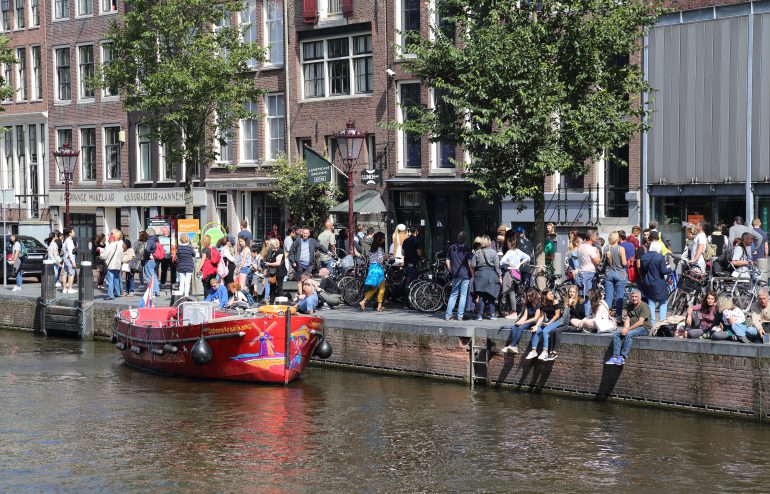After a brief period of calm during the pandemic, Amsterdam will most likely host more than 20 million visitors in 2023, according to the city’s Research and Statistics unit. Post-pandemic tourist numbers in the Netherlands steadily rose last year. More than 14.6 million visitors stayed in hotels and other short-term accommodations in the third quarter of 2022, a full 15% more than the year before, according to data published by Statistics Netherlands. Around 5.4 million of those vacationers came from abroad. Amsterdam, as usual, was the most popular destination in the Netherlands for foreign tourists. But many Amsterdammers are less than enthusiastic about the return of mass tourism, which has long been a major concern for residents and businesses. Noise, crowds and rowdy behaviour are some of the most common complaints. But it’s not just Amsterdam’s denizens who’ve had enough of the crowds – it turns out tourists could do without them as well.
A recent study by researchers at the Experience Lab of Breda University of Applied Sciences, Tilburg University, and KU Leuven used virtual reality (VR) technology to evaluate tourist responses to crowds and crowded locations. Several Amsterdam hotspots were included, including Kalverstraat, Prinsengracht and Dam Square. Participants’ emotional reactions were measured while they viewed images depicting these popular locations with different crowd densities.
It turns out that tourists really don’t like crowded places. Many participants were particularly sensitive to the feeling of being surrounded by masses of people; the sensation triggered flight-like brain responses in some subjects. Around 84% of participants would be willing to pay entrance fees up to €5 to enjoy less crowded attractions. The study also found that tourists are willing to change plans and adjust their schedules if provided with real-time information about crowd levels.
Overtourism has long been an issue for those who live and work in Amsterdam. The rise of short-term and party tourism has fundamentally altered the character of many of the city’s historic neighborhoods. Noise and rowdy behaviour from bachelor parties and pub crawls are common irritants, particularly in De Wallen, the city’s famous Red Light District. City council members regularly field complaints about rowdy tourists from constituents.
Amsterdam already has regulations in place to address tourism-related overcrowding. The city’s Tourism in Balance ordinance, adopted in 2021, establishes a limit of between 10 and 20 million overnight tourist visits per year and requires the city to take action if it appears that number will be exceeded. However, that’s not enough to keep Amsterdam a nice place for residents and visitors.
Sofyan Mbarki, Amsterdam’s Deputy Mayor of Economic and Inner City Affairs, introduced a comprehensive program to address several overtourism-related issues raised by constituents, stating it “has become clear that everyone cares about the city and that intervention is needed to counter the nuisance and overcrowding”. Mbarki’s plan calls for restrictions on organized pub crawls and bachelor parties, as well as limits on the number of canal cruise docking points in the Red Light District. Earlier closing hours for bars and clubs in the area have been proposed.
Written by Lorre Luther
A ban on smoking marijuana in public spaces is under consideration. Furthermore, the plan calls for transforming some hotels into offices and living spaces. Mbarki also hopes to encourage some tourist attractions to relocate to areas outside of the city centre, such as Amsterdam North and Zuidas. The program includes plans for a public service campaign to educate tourists about behavioural expectations, which is expected to be rolled out in the spring of 2023.
The proposals are part of Mbarki’s Visitor’s Economy 2035 program designed to manage economic growth while responding to the tourism-related concerns of those who live and work in the city. “If we want effective and forward-looking cooperation, both a long-term vision and appropriate measures are needed. Amsterdam is a metropolis and that means a lively and bustling city, but to keep our city livable, we now have to opt for limits instead of irresponsible growth,” explains Mbarki. Debate on the measures is continuing in the municipal council.
